Paint for pipes - features of choice
Painting pipes may be required for various reasons, for example, to give the pipeline an attractive appearance and protect it from corrosion. Since the pipelines are of different types, the choice of the paint coating in each individual case must be individual - if the paint for pipes in the bathroom must have moisture resistance, then the heat-resistant composition is necessary for the heating pipes. Next, we will take a closer look at when, what kind of lacquer coating can paint the pipes and how this process takes place.
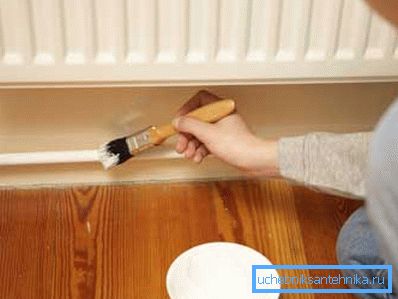
How to paint a pipe
Before you make a choice of coloring composition, you should determine the basic requirements that it must meet. The basic requirements are as follows:
| Coverage compliance with pipeline operating conditions | The pipeline may be:
The paint must be resistant to all environmental influences. |
| Compliance with the material from which the pipe is made | Pipes can be steel or plastic. In accordance with this is selected and cover. |
| Cost of | The price of paint can be very different. Therefore, you need to choose the composition, the cost of which corresponds to your financial capabilities. |
| Appearance | The coating can be matte or glossy. In this case, the choice depends on individual preferences. |
| Environmental friendliness | If the pipeline is located indoors, the LCP during operation should not release toxins. |
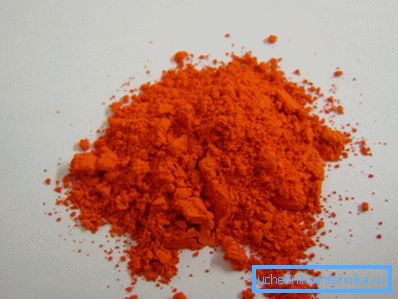
Paint for outdoor piping
For pipelines located outside the room you can use the following types of coatings:
- Red lead - The peculiarity of this paintwork is that it oxidizes the outer layer of a metal pipe, as a result of which a solid film of lead-ferrous oxide is formed. This film prevents further oxidation of steel and perfectly resists the effects of the atmosphere.
- Polyurethane paint - is also an excellent option to protect the pipeline from any environmental influences.
- Alkyd paint - forms a bright glossy coating and tolerates environmental effects. The only thing that should be noted is that some types of alkyd compounds can turn yellow when exposed to sunlight.
It must be said that other types of compositions can be used to cover external pipelines, the only thing that needs to be paid is that they are intended for outdoor work.
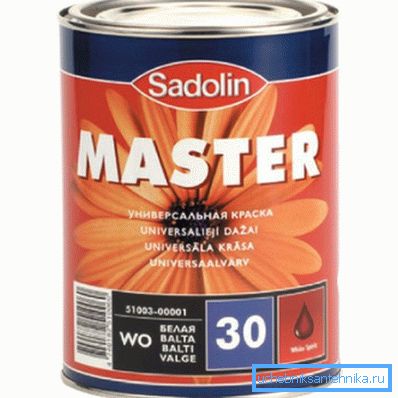
For domestic pipeline
Paint for pipelines located indoors, first of all must be environmentally friendly. Therefore, the best option is water dispersion formulations. Water is used as their solvent, therefore they are completely odorless and harmless to human health.
Alkyd enamel can also be used, however, it should be borne in mind that during work it exudes a strong unpleasant odor. However, over time, after painting, it disappears.
I must say that not so long ago, for the purposes indicated, oil paint was used everywhere, but gradually it lost its popularity. Its disadvantage is the fragility and toxicity during application. However, this paintwork can also be considered as an option, for example, if the material remains after painting other surfaces.
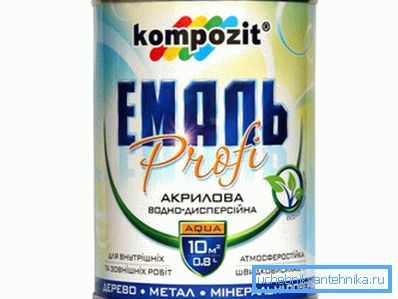
For heating surfaces
Most often house craftsmen are interested in what paint to paint heating pipes so that the coating does not deteriorate and does not emit harmful substances as a result of heating.
In this case there are a lot of suitable options:
- Acrylic Enamel - are a durable coating that forms an attractive glossy film of saturated color on the surface.
- Alkyd enamel - the advantage is the rich colors and resistance to abrasion. The disadvantage of alkyd enamels is toxicity during drying.
- Water dispersion - if the basic condition is painting the heating pipes without odor, then these compounds are the best choice. In addition to environmental friendliness, their dignity is a high drying rate.
Note! Many craftsmen, when they come across painting hot surfaces for the first time, ask specialists at the forums - can we paint pipes during the heating season? Of course, painting can be done at any time, however, in any case the surface should be at room temperature, respectively, the heating system must be turned off before this procedure. Therefore, to decide whether to paint in the heating season or not - everyone must decide for himself.

For plastic pipelines
In some cases it may be necessary to give plastic pipes one or another color so that they fit well into the surrounding interior. Immediately it should be said that not every plastic can be painted. If, for example, the pipeline is made of polypropylene or polyethylene, then this venture will have to be abandoned, since not one LCP will normally hold onto the pipes.
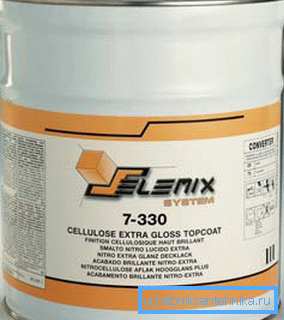
If we are talking about painting PVC or plastic based on ABS, then you can use acrylic or polyurethane coating. (See also the article Distribution of heating pipes: features.)
Painting
Material calculation
So, with the choice of paint coating, we figured out. Now, before you make a purchase of the material, it is necessary to perform the calculation of paint on the pipe in order to purchase exactly the amount that will be needed for painting.
Consumption composition is usually indicated on the package. And to find out the area that will have to be painted, it is necessary to multiply the length of the pipe by its diameter and the number Pi. Since the painting will be performed, most likely, in two layers, the resulting value should be multiplied by 2.

Paint application
Instructions for painting the pipeline is not much different from the coating of paintwork on other surfaces.
It looks like this:
- First of all, you need to prepare the surface - clean off the old coating, rust, etc., and then degrease it with a special compound.
- Next, the pipes must be covered with a layer of primer. For each paint, the primer may be different, so it is desirable to use a primer recommended by the manufacturer.
- After the soil dries, you can paint on the surface of the pipe. You can do it yourself with a soft thin brush or spray gun. The most important thing is that the paint should go in an even thin layer, without any smudges.
- After the first layer dries, the second layer of the coating is applied in the same way.
Note! Before painting the coloring composition must be well shaken. In addition, when using water dispersion paint, it may be necessary to add a color to add a liquid of a particular color.
This completes the painting process.
Conclusion
To date, the market has a large selection of coloring compositions. Therefore, before making a choice in favor of a product, it is necessary to determine the requirements that the coating must meet.
From the video in this article, you can get more information on this topic.